Introduction to Human Factors & Ergonomics
Learning Outcomes
1. What are some examples of good, bad, and ugly design?
2. What is human factors psychology/cognitive engineering/ergonomics?
3. Describe the history of the field, training, and a typical job.
4. Why bother with human factors?
5. What is the systems approach? How does it help us to understand the 2003 blackout?
6. How do the tipping point and broken windows theory relate to the systems approach?
7. What are some common themes in human factors and ergonomics?
The Design of Everyday Things
When it comes to the usability of everyday things:
• some things are easy to use
e.g., using a pen, reading a book
• some things are not easy to use
e.g., flying an Airbus A350, opening a bag of _____
Why are some things easier to use than others?
• simplicity
• better ______
Designed objects can be good, bad, or ugly:
|
The good: OXO’s Good Grips® line of kitchen tools (Liston, 2017; Wilson, 2018)
- during a vacation in France, retired industrial designer Sam Farber’s wife Betsey was making an apple tart
- she had arthritis, and the metal peeler she was using hurt her hands
- Farber hired Smart Design consultants
• performed rigorous research and prototyping, trying dozens of different _______
• worked with volunteers from the American _________ Foundation to design a wider, more comfortable oval handle that would not slip even when wet
• made handle out of thermoplastic rubber with scooped-out areas filled with fins for your thumb and forefinger, inspired by bicycle handle grips
• swivel peeler blade is extra sharp, so it requires less force to use
- although it was endorsed by the AAF, OXO removed this from their packaging; one of their guiding philosophies is _________ design: it should be made for and usable by anyone
- the name OXO itself has forward/backward, upside-down, and vertical graphic symmetry
- OXO products have won many awards:
• Fast Company’s Timeless Design Award, and Innovation by Design award
• The Chicago Athenaeum: Museum of Architecture and Design/The European Centre for Architecture Art Design and Urban Studies design award
• over 30 of its products are part of the permanent collection at the Cooper-Hewitt, Smithsonian Design Museum
• inducted into the Museum of Modern Art’s permanent collection in 1994
- OXO is one of the most successful (and profitable) brands of kitchen gadget
- the original swivel peeler has a rating of 4.8 on Amazon with over 49,000 reviews
|

|
The bad:
- _______ effects: ironic, unintended consequences of mechanical, chemical, biological, or medical systems--not a side effect or a trade-off (Tenner, 1996)
e.g., revenge effect: arthritic hands cannot open _____-_____ bottles of pain reliever
(solution: easy-open bottles)
• side effect: cancer chemotherapy causing baldness
vs. revenge effect: cancer chemotherapy causing another cancer
• trade-off: legally required safety features cause increase in airline fares
vs. revenge effect: higher fares on safer airlines cause people instead to drive--which is more dangerous
(How to prevent revenge effects? Think of __________!)
- ____ ________ (or deceptive design): manipulative aspects of design in user interfaces of websites and apps that trick users into doing things that they didn't mean to do (Brignull, 2010)
e.g., hidden costs or “sneaking”: cost of an item is changed at the last minute due to the addition of taxes, fees, insurance, limited time conditions, or high shipping costs
e.g., obstruction or “roach motel”: subscribing to a service is easy online, but cancelling it is difficult, requiring multiple steps, chat, or even a phone call
- unpleasant design and hostile architecture
The ugly:
- see subreddit r/CrappyDesign
- and Instagram account Uglydesign
How can __________ make things understandable, usable, and enjoyable?
Human Factors & Ergonomics (HF/E)
What is human factors and ergonomics?
• “Human factors discovers and applies information about human behavior, abilities, limitations, and other characteristics to the design of tools, machines, systems, tasks, jobs, and environments for productive, safe, comfortable and effective human use.” (Alphonse Chapanis, 1985, p. 2)
• “Ergonomics (or human factors) is the scientific discipline concerned with the understanding of interactions among humans and other elements of a system, and the profession that applies theory, principles, data and methods to design in order to optimize human well-being and overall system performance.” (International Ergonomics Association, 2019)
• relates to _________ ___________, which �applies cognitive science to the design and operation of complex human-machine �systems that enhance human cognitive �performance (Donald A. Norman, 1981; 1986)
• and __________ (Greek): ergo (“work”) and nomos (“laws”)
- coined by Wojciech Jastrzębowski (1857) “the science of work based upon the truths drawn from the science of nature” (p. 227)
- three schools of thought on “human factors” and “ergonomics”
1. terms are synonymous: “human factors” in North America, “ergonomics” in Europe
2. terms describe different concepts: “human factors” focused on cognitive issues; “ergonomics” focused on physical issues
3. terms are related: “ergonomics” is a subset of “human factors”
History of Human Factors
Frederick W. Taylor, Principles of Scientific Management (1911):
- influenced development of the assembly line
- believed there was “one ____ way” to do any job
- the father of scientific management: “Taylorism”
- principles of scientific management:
1. apply __________ method to determine most efficient way to do work, instead of following “rules of thumb” or habit
2. scientifically select, train, and develop workers optimally, based on ability
3. monitor performance and _________ with workers to ensure that scientifically developed methods are applied
4. allocate work to managers (e.g., planning and training) and workers (e.g., performing tasks) to which they are best suited
- case study: Bethlehem Steel
• 400-600 fulltime shovelers employed; used their own _______
• studied shovels and materials (e.g., “rice” coal vs. ore) to find optimal size/weight for each task
• maximum efficiency at ____ lbs.
• company provided optimal shovels; productivity increased
• workers given pay increase--but workforce ___ to 140
- developed ____-_____ methods, using stopwatches to record the time taken to accomplish a task
- called before US House of Representatives; laws banned use of ___________ by civil servants until 1949
- instituted mandatory breaks to prevent fatigue and increase workers’ efficiency
Frank Bunker Gilbreth (& Lillian Gilbreth) (1909):
- former associates of Taylor; philosophical differences led to a rift between them
- developed motion studies, often filming workers
- described 18 kinds of elemental motions, called “_________”
- case study: bricklaying
bend over, pick up brick, look for best side, scoop up and apply mortar, place brick
- designed scaffolding to reduce reaching distance; mortar scooped with other hand
- number of motions decreased from 18 to 4.5
- output increased from 120 to ___ bricks/hour; encouraged higher pay for workers
- basis for books & films Cheaper by the Dozen (1950), and Belles on Their Toes (1952)
Elton Mayo (1933):
- studied workers who assembled telephone relays from ~40 parts at the Hawthorne Works factory of the Western Electric Company in Illinois
- study 1: group of workers had illumination changed
• no connection between illumination and ____________
- study 2: subgroup of six women studied
• output _________, despite changes in rest breaks, work hours, temperature, humidity
- “_________ effect”: increase in productivity due to knowledge that one is being observed, confounded with environmental manipulations
- but may also be due to:
• ______ supervision--researcher was more a friendly observer than disciplinarian
• having their concerns heard
• feeling of belonging to a ____
• novelty effects
- other criticisms:
• studies were poorly controlled (changes all made on Monday mornings)
• Great Depression may have increased work motivation
• results not always __________
- contributed to industrial/organizational (I/O) psychology: the study and application of behaviour in the workplace
Technological developments in World War II:
- more _______ weapon & transport systems developed; “finding the right person for the task” was absurdly simplistic
- crashes typically blamed on “_____ _____”
e.g., over a span of 22 months, 457 B-17 crashes were caused by pilots retracting landing gear instead of controlling flaps because they mixed up the controls
- problems using equipment showed the need for human factors analyses
Chapanis (1953, 1999):
- in 1943, modified B-17 controls:
• attached wedge-shaped end to flap control
• added small rubberized disc to landing gear control
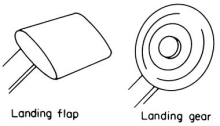
- shapes easily distinguished; map well to function
- _____ coding: intuitive relationship between control shape and function
- result: “pilot error” disappeared
- inexpensive, simple design change → huge impact
Human Factors as a Profession
|
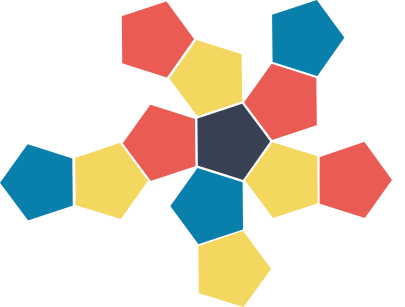
|
Chartered Institute of Ergonomics & Human Factors
- formed in 1949 in _______ as Ergonomic Research Society
- changed name to The Ergonomics Society in 1977
- changed name again in 2009; “Chartered” added in 2014
- has about 1,200 members
|
|
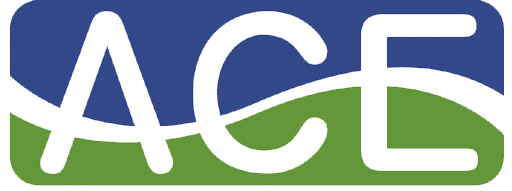
|
Association of ________ Ergonomists
- formed in 1968 as Human Factors Association of Canada
- changed name in 1999
- has about 500 members
|
|
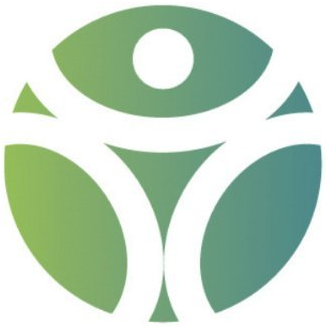
|
Human Factors and Ergonomics Society
- founded in 1957 as Human Factors Society of America
- changed name in 1992
- has about 3,500 members
|
HFES _________ Groups: subgroups in specialized areas
Aerospace Systems 🚀 |
Aging 🧓 |
Augmented Cognition 🔬 |
Children’s Issues 👶 |
Cognitive Engineering & Decision Making 🧠 |
Communications ☎️ |
Computer Systems 💻 |
Cybersecurity 🛡️ |
Education 🏫 |
Environmental Design 🏢 |
Extended Reality 👓 |
Forensics 🔍 |
Health Care ⚕️ |
Human-AI-Robot Teaming 🤖 |
Human Performance Modeling 🏃 |
Individual Differences in Performance
👩🏻👩👨🏿👩🏽🧑🏻🦽🧑🏽🦯 |
Internet 🛜 |
Occupational Ergonomics 👷 |
Macroergonomics 🌐 |
Product Design 📦 |
Perception and Performance 👁️ |
Surface Transportation 🚚 |
Safety 🛟 |
System Development 🎚️ |
Sustainability 🌱 |
Usability and System Evaluation 🧩 |
Training 🧑🏫 |
Training (HFES, 2001):
• psychology: 36%
• engineering: 24%
• specialized human factors programs: 12%
• life sciences: 6%
• industrial design: 2%
• __% overall have PhDs
Workplace (HFES, 1986):
• ________: 39%
• business: 19%
• government: 20%
• academia: 18%
Specific fields (Van Cott & Huey, 1991):
• _________: 22%
• aerospace: 22%
• industrial processes: 17%
• health and safety: 9%
• communications: 8%
• transportation: 5%
• other: 17%
(In Canada, ergonomists work for Gameloft, Canadian Armed Forces, Maple Leaf Foods, Canadian Tire, Sanofi Pasteur, Telus, and Alberta Health Services, for example.)
Common activities (Sanders, Bied, & Curran, 1986):
• communication
- write _______: 80%
- conduct formal briefings and presentations: 59%
• management
- schedule project activities: 53%
- manage and supervise others: 49%
• system development
- determine system requirements: 43%
- verify system design meets human factors _________: 43%
• research and evaluation
- develop experimental designs to test theories or evaluate systems: 44%
- design data collection instruments and procedures: 39%
Professional Certification:
- requires professionals to meet standards of ________ and __________
- rationale:
• protects users of HF/E services
• protects the reputation of the field
• improves quality of practice
- professional certification requires bachelor’s degree, 3 years of experience, and a written exam
- types:
• Certified Professional Ergonomist (CPE)
• Certified Human Factors Professional (CHFP)
• Certified User Experience Professional (CUXP)
- certification done through:
• Canadian College for the Certification of Professional Ergonomists (overseen by ACE)
• Board of Certification in Professional Ergonomics in the USA
Why bother with human factors?
Five fallacies assumed by designers (Pheasant & Haslegrave, 2006)
1. This design is satisfactory for me, so it’ll be satisfactory for everyone else.
2. This design is satisfactory for the average person, so it’ll be satisfactory for everyone else.
3. The variability of human beings is so great that it cannot possibly be catered for in any design, but people are so _________ it doesn’t matter anyway.
4. Ergonomics is expensive and because products are purchased on appearance and styling, ergonomic considerations may conveniently be ignored.
5. Ergonomics is an excellent idea. I always design things with ergonomics in mind, but I do it intuitively and rely on my ______ _____, so I don’t need any data.
Benefits of human factors (Mayhew, 1992):
• increased product _____
• increased user satisfaction
• increased user productivity
• decreased customer support costs
• decreased development costs
• decreased employee turnover/sick leave
• decreased training costs
• decreased maintenance costs
The Systems Approach
General _________ Theory
- developed by Ludwig von Bertalanffy (1968), Hungarian biologist educated in Vienna
- reacted against reductionism; wanted to _____ the sciences
- emphasized that real systems are open to, and interact with, their environments
- focused on arrangement of and relations between the parts which form a whole
- the same concepts and principles of organization underlie different disciplines, providing a basis for their unification
- influenced by mathematician Norbert Wiener (Cybernetics: or Control and Communication in the Animal and the Machine, 1948):
• in WWII, worked on gunfire control, the problem of pointing a gun to fire at a moving target
• invented ___________: a theory of the communication and control of regulatory feedback
- and by psychiatrist W. Ross Ashby (An Introduction to Cybernetics, 1956), who also wrote about systems theory and cybernetics
Systems Engineering
- interdisciplinary approach to:
• requirements
• ______, development, production, and operation
• coordination of teams
• automatic _______ of machinery
- aids in management of complex projects in specialized domains
e.g., logistics
- ________ in nature: requires consideration of all system components, everything that interacts with the system, as well as the environment in which the system operates
Applying the Systems Approach
- examine components that could contribute to systems failure
- from the micro level...
• environment - adjust features of the work environment such as temperature, lighting, sound, etc.
• _________ - modify physical design of tools
• interface - alter means of interaction with equipment
- ...to macroergonomics
• task design - transform how tasks and jobs are accomplished
• training - change worker behaviour by providing skills and teaching procedures
• _________/organizational design - recognize individual differences in ability to accomplish work
Case Study: 2003 Blackout
(NERC, 2004)
- electric power system:
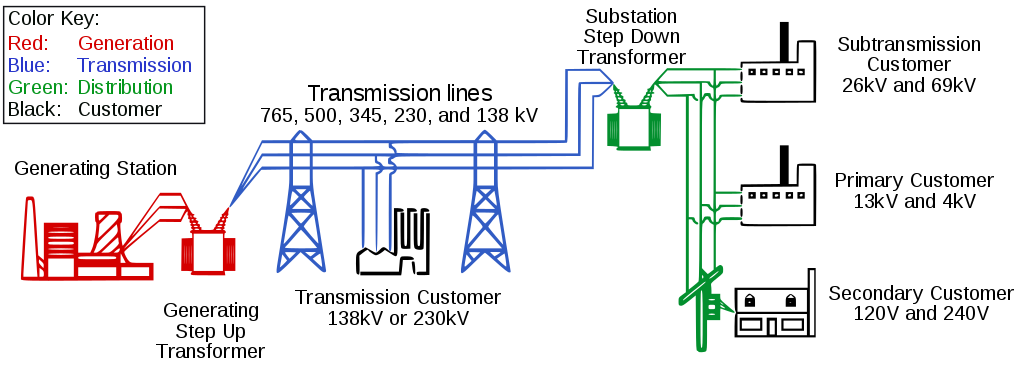
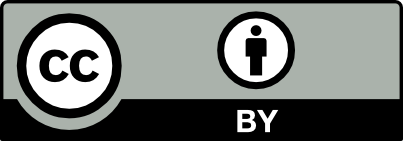
• __________: power plants generate electricity
• ____________: high-voltage lines carry electricity
• ____________: substations, transformers “step down” power for customers
- these components are owned and run by energy companies and utilities
- oversight handled by non-profit Independent System Operators (ISOs), that coordinate, control, and monitor transmission systems
- power “grid”:
• network of transmission lines and switching stations
• North America has three distinct grids or “________________”: allow sharing of generation reserves, mutual help in dealing with disturbances
- timeline:
Thursday, August 14, 2003
• weather around 32 °C
• high (but normal) demand
• power lines not hit by lightning
12:15 p.m. EDT
• state estimator software (power flow monitoring tool) at Midwest ISO (MISO) rendered inoperative by incorrect input data
• operator corrects problem, but forgets to restart monitoring tool
1:31 p.m.
• FirstEnergy Eastlake Unit 5 generator’s reactive power increased beyond limits; “_______” offline
• alarm systems failed
2:14 p.m.
• software in FE control room choked
• computers unable to process alarms, but did not indicate this
2:20 p.m.
• FE’s energy management system software began to fail
• support staff failed to tell operators
3:05-3:41 p.m.
• three 345 kV transmission lines in Ohio contacted overgrown trees and tripped
3:39-4:08 p.m.
• power flow shifted to network of 138 kV lines
• 16 lost due to overloads/ground faults
4:05 p.m.
• Sammis-Star 345 kV line overloaded, preventing power import to north Ohio
• _______ _____: initiated cascade
4:10 p.m.
• cascading system _______: transmission lines disconnected and generation shut down in central Michigan and northern Ohio
4:13 p.m.
• cascade ends: voltage/current swings dampened over distance
• disturbance reached areas with higher-capacity lines
• trips created isolated “islands” which helped stabilize the system
- consequences:
• biggest blackout in US history: 50 million people in eight states and Canada blacked
out
• 264 power plants shut down; 62 GW of power lost
• some areas without power for up to 4 days
• total cost: US$8 billion
- causes:
• inadequate system _____________
▸ FE: insufficient planning to know Cleveland-Akron area was deficient in power supply
• inadequate situation _________
▸ alarms, computers malfunctioned; poor communication; insufficient backups
• inadequate ____ ________
▸ poor maintenance (one tree was over 42' tall)
▸ lines sag with heat/low winds, and higher current
• inadequate __________ support
▸ MISO had inadequate monitoring systems, so could not identify problems
▸ critical computer malfunctioned; was shut off as technician went for lunch
• interacting factors at ________ levels: hot weather (environment) × high demand (individual) × poor vegetation control (supervision) × software failure (infrastructure) × poor communication (interpersonal) × mismanagement (management) × interconnected electrical grid (infrastructure) × poor oversight (legislation)
The Tipping Point
- term coined by sociologist Morton Grodzins (1958), referring to “_____ ______” from neighbourhoods post-WWII as Black families moved in
- uses metaphor of an ________ (nonlinear systems/geometric progression): little things can have a big effect (and vice-versa)
- also: many factors may contribute to a result, but not in equal proportions
- popularized by Malcolm Gladwell’s (2000) book, The tipping point: How little things can make a big difference
Zimbardo (1969):
- parked 1959 Oldsmobile on a street in Palo Alto near Stanford: sat untouched for a week
- identical car parked in the Bronx near NYU, but licence plates removed and hood up: was stripped within a day
- then smashed Palo Alto car with a sledgehammer: people vandalized car until it was wrecked
- led to “______ _______” theory
Broken Windows theory (Wilson & Kelling, 1982):
- fix small things like repairing broken windows, removing graffiti, or cleaning litter
- this leads to two outcomes:
1. _________ and petty crime will be deterred
2. major _____ will be prevented
- thus, respectable citizens will not move away, averting a _______ ______ of increasing antisocial behaviour
e.g., Keizer, Lindenberg, & Steg (2008):
- attached flyers from fictional sportswear shop to handlebars of bicycles
• control: 33% threw flyers on the ground
• put graffiti on nearby wall: __% littered
- envelope with visible €5 note inside was sticking out of a mailbox
• control: 13% of passersby stole envelope
• graffiti on mailbox/litter on ground: __% stole envelope
- conclusion: behaviour is governed by ______ _____
- problems arise when perception of what is common (e.g., graffiti) does not match expectations of society (e.g., “no graffiti” sign)
- pros & cons:
 environment is a likely contributing determinant of behaviour
environment is a likely contributing determinant of behaviour
e.g., Crime Prevention Through Environmental Design (CPTED; Crowe, 2000)
 some evidence: credited with drop in crime in NYC in the 1990s
some evidence: credited with drop in crime in NYC in the 1990s
e.g., Rudolph Giuliani’s “Quality of Life” campaign in New York focused on seemingly trivial fixes such as removing graffiti, clearing signs of vandalism, and sweeping the streets
 many other factors contribute to criminal behaviour
many other factors contribute to criminal behaviour
e.g., innovative policing, demographic changes, etc.
 evidence is equivocal/confounded
evidence is equivocal/confounded
e.g., evaluation of “disorder” more dependent on race and _____- ________ status
Some Common Themes
1. The Systems Approach
- every event has determinants at multiple levels
e.g., physical ergonomics to individual and group behaviours to organizations and laws
2. Error
- errors are impossible to avoid, so systems must be ________ of error
- “tombstone technology”: humans deaths lead to improvements in technology to prevent more deaths
e.g., development of flight recorders prompted by high insurance payouts after aircraft crashes
3. Design
- structure vs. function:
“Design is a funny word. Some people think design means how it looks. But, of course, if you dig deeper, it’s really how it _____. To design something really well, you have to ‘get it.’ You have to really grok what it’s all about.” -- Steve Jobs (1996)
4. Consider the User
- essential to take ______ perspective (not designer’s)
- human factors advocates on user’s behalf with designers
5. Trade-offs Always Exist
- enhancing one feature of a system affects others: these will conflict (e.g., cost vs. safety)
- it is possible (and likely) that both are important and desirable--they need to be ________
6. Feedback
- critical in refining the performance of humans, machines, or human-machine systems





